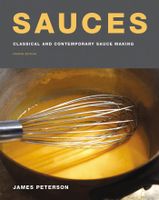Label
All
0
Clear all filters
Essences
Appears in
Published 1991
Before the twentieth century, cookbooks made frequent reference to essences, especially essences of specific game birds. Most cooks assume that the best way to extract the essence of flavor from a pigeon carcass, for example, is to roast it with a little mirepoix (correct) and then simply simmer it for a couple of hours (incorrect). Truth be told, long simmering does little to extract the essential flavor of a carcass or meat trimmings; it will, however, produce a stock that is always useful in the kitchen as a base for essences. In short, if you’re making a pigeon essence and you’re fortunate enough to roast pigeons on a regular basis, proceed as follows: Brown broken-up carcasses (cooked or not; it’s fine to use leftover carcasses from a roast) in a pot with onion and carrot. Add a bouquet garni and just enough stock to cover. Simmer for 2 hours, and strain. This is the stock. Take another batch of carcasses, brown them thoroughly with onion, carrot, and perhaps a little thyme, and deglaze the pan with the stock you made. Scrape up the caramelized juices and stir the carcasses around in the stock over the heat for about 5 minutes. Strain; this is the essence. Use these barely cooked carcasses to make stock for the next batch. By using this method—quick deglazing with very little cooking—you capture the essence of a thing. The stock provides body and a backdrop, but it’s the final 5 minutes of simmering that capture the essence.
In this section
Part of
Advertisement
Advertisement


